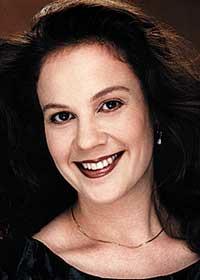|
Symphony
SRS SEASON ENDS WITH RESOUNDING TA-TA-TA-BANG
by Terry McNeill
Sunday, June 1, 2025
Symphony
YOUTHFUL VIRTUOSITY ON DISPLAY AT USO'S MAY CONCERTS
by Peter Lert
Saturday, May 17, 2025
Symphony
MYSTICAL PLANETS AND LIVELY GERSHWIN ORTIZ AT FINAL SRS CONCERT
by Peter Lert
Sunday, May 4, 2025
Symphony
VSO'S CONCERT MUSIC OF TIME, MUSIC OF PLACE
by Peter Lert
Sunday, April 27, 2025
Choral and Vocal
VOCAL ELEGANCE AND FIRE AT THE 222'S RECITAL APRIL 26
by Pamela Hicks Gailey
Saturday, April 26, 2025
CANTIAMO SONOMA SINGS AN INSPIRED GOOD FRIDAY MOZART REQUIEM CONCERT
by Pamela Hicks Gailey
Friday, April 18, 2025
DRAMATIC SHOSTAKOVICH SYMPHONY CLOSES PHILHARMONIC'S 25TH SEASON
by Terry McNeill
Sunday, April 13, 2025
LARGE COLLEGE OF MARIN AUDIENCE GREETS STOPHER ARTISTRY
by Terry McNeill
Saturday, April 5, 2025
Chamber
FRISSON DELIVERS SHIVERS OF DELIGHT
by Abby Wasserman
Sunday, March 30, 2025
OLD AND MOSTLY NEW IN SRS MARCH CONCERT IN WEILL
by Peter Lert
Saturday, March 22, 2025
|
 |
 Israeli Pianist Gila Goldstein |
GOLDSTEIN'S FINE PIANISM AT OAKMONT
by Terry McNeill
Thursday, May 14, 2009
Gila Goldstein isnít a household name in North Bay music, but as a visiting virtuoso the New York resident has played here a lot: three recitals in San Franciscoís Old First Church series, another in a stately Marin hilltop home, one for Concerts Grand, and at least one Sonoma County home concert. May 14 found her at the Oakmont Concert Seriesí Berger Auditorium, her third recital there, with a varied program of virtuoso works for the piano.
Goldstein, trained in her native Israel and at the Manhattan School of Music, offered a mixed bag from six composers in the first half, beginning with the big Bach Chaconne from the Second Violin Partita, in Busoniís edition. As in the rest of the program, she took a measured approach to the massive work, leaving orchestral playing aside and concentrating on fine details, distinct lines and coloristic effects. Her scales were clean, and she judiciously traded the themes between her hands.
Lisztís Sonetto Del Petrarca followed, again in a colorful but small-scaled reading, more reminiscent of Brendel than of Horowitz or Bolet. A lovely inner voice peeped through before the final thematic statement. A Nocturne by Respighi was next. The work has a beguiling shimmer with softly repeated right-hand alternating chords, and the surprise of two low-bass ending notes. Goldstein played it wonderfully, along with the following work, Debussyís Poissons díor. Her playing of Debussyís overlapping tremolo figures was suitably impressionistic, as were the fluid arpeggios. Playing fast, delicate pianissimo passages is clearly difficult, but she handled them with aplomb.
Concluding the first half were Paul Ben-Haimís Five Pieces for Piano, a Goldstein specialty. Each section alternates improvisational melodies and exciting rhythms. The ending Toccata is directly akin to Prokofievís Toccata and much of his Third Sonata (which Goldstein played here three years ago), and it was and equally effective under Goldsteinís fleet and accurate fingers. The Canzonetta was phrased in a way to delight any singer in the audience of 160.
The concert, the fifth in the 2009 season, had but one work in the second half, Schumannís Davidsbundlertanze. Comprised of 18 short dances and other works from 1837, the cycle has never acquired the popularity of the composerís other cyclic works: Carnaval, Humoresque, Kreisleriana and the Noveletten. The Davidsbundlertanze is a difficult piece for the listener, having considerable sectional beauty but lacking the dramatic contrast and march themes of the 22-part Carnaval. Goldstein lavished a great deal of beautiful pianism on the piece, playing repeats differently (a mark of the romantic pianist) and adding little phrase-ending ritards and telling off-beat accents. Her control of pianissimo and evocative tone color from the pianoís midsection were masterful. She has a lyrical gift and a deft touch well suited to this neglected but demanding work.
No encore was requested by the assembly, though more of the richly hued Schumann would have been a blessing. Also desirable would be a method of quieting Berger Auditoriumís air conditioning system. Its steady hum offered a less-than-joyful accompaniment to an afternoon of fine piano playing.
|
